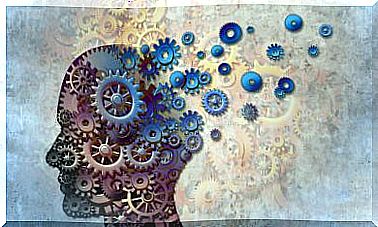Convergent Thinking: What It Is, How It Works And Advantages

Surely you’ve heard of divergent or creative thinking, but… And what about convergent thinking? Do you know what it is or when we apply it? The reality is that there are multiple ways of thinking, reflecting and reaching more or less reliable conclusions. Choosing the best of them is itself a skill that improves with experience and learning.
Today we will focus on convergent thinking, a type of logic-based thinking that will help us solve single-solution problems. You want to know more? Keep reading!
Convergent Thinking: What is it?
In 1967, the American psychologist Joy Paul Guilford proposed two types of thinking, at that time, novel: divergent thinking and convergent thinking.
He defined convergent thinking as the ability to give the correct answer to a question by ordering the available information in a logical way. In other words, it would be the ability to solve problems or answer questions without requiring great creative ability.
An example of convergent thinking would be one that we usually use to do common operations, such as addition.

Thus, through convergent thinking, we follow established and habitual patterns for problem solving. Through this type of thinking we do not “go further” (as we would do with divergent thinking, which we will explain below) of applying the strategy that we have used before in the same sense and field in which we have also used it.
By contrast, divergent thinking defined it as a process of posing or solving problems through the search for novel strategies and solutions . This type of thinking has also been called creative thinking or lateral thinking. According to Guilford, innovation processes alternate both types of thinking. On the other hand, one of the objectives of this type of thinking is to find more effective solutions.
How does convergent thinking work?
As we have seen, we could say that convergent thinking would be antagonistic to divergent (creative). This type of thinking does not focus on all the possibilities (and even those that require greater imagination) of the problem, but seeks to find the most suitable solution quickly and precisely.
To do this, we use information that we believe will help us solve the problem, but we do not imagine alternative or atypical scenarios, as we would do with divergent thinking. In this sense, it is a fairly limited thought process.
When is it most useful?
Convergent thinking, although it may seem more limiting because it does not feed on imagination or creativity, can be very useful in certain situations.
For example, in those situations in which it is possible to find a single correct answer, which we would arrive at through a decision-making process (or by applying logic).
What characterize it?
It is a type of thinking that usually gives us answers with little uncertainty. In addition, it is based on reason and logic, and with it we use the information available to find a very precise answer quickly (with the lowest possible cost of time).
On the other hand, convergent thinking is related to the knowledge that we already have. This is so because when we apply it, we use data in a standardized way.
Finally, as characteristics to highlight, we find that through it we also use another type of thinking, critical thinking. The latter is based on information, prior knowledge, logic, statistics, and probabilities.
Advantages of convergent thinking
What are the advantages of using this type of thinking and not another? We are going to know two of the most important:
Perfect for those problems for which we do not need a better solution
Convergent thinking can also help us make decisions. According to the psychologist Oscar Castillero, decision-making encompasses all those processes through which a subject makes the determination to select one of the many possible options from among those presented. To do this, the person relies on a large number of factors that surround this situation.
Employing this type of thinking on a day-to-day basis is very helpful for most problems. Are we going to look at the plan every day to go from home to work? Are we going to continue looking for a recipe that improves that stew that is already great for us?
Thus, there are times when we do not need better results; with the solutions and strategies that we already know is enough. This is the terrain in which convergent thinking gives us confidence and presents itself as the best of choices.

Spends few cognitive resources
Using the strategies we already know saves mental energy. They are familiar roads or trails, routes that we have already explored and therefore predictable.
If we are cold, we know that by turning on the heating this feeling will go away. If our back bothers us, we know that stretching it will relieve us. We carry out these types of actions almost automatically.
Thus, this thought is very light in its application. With him we make a lot of decisions every day that we are not even aware of.
Learning and thinking
Convergent thinking can be useful in many cases, and knowing its characteristics can help us improve its use and effectiveness. There are many types of thinking, and the usefulness of each of them, the choice of which is better and worse, will depend on circumstantial variables, our purpose and the nature of the problem itself.
The important thing will be to analyze the context well, know the response possibilities (and if they do not exist, create them, empower our imagination), develop an action plan and execute it to arrive at the desired response. We will be wrong a thousand times, but luckily mistakes are what create a path to learning.









